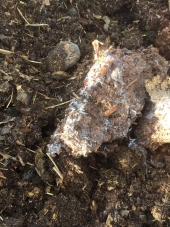



Dennis Bangham wrote:Dan,
Any updates on your IBC totes and how effective they heat and cool your greenhouse? I live in the southern USA and have been thinking about doing something similar.
I am thinking of a full diffused light (' by 20') greenhouse with sunlight coming through the roof and all the walls. I also have a high water table and expect the temperature to stay around 55F all year round.
The lowest temperatures maybe 9 degrees for a couple of nights in winter and a couple of months of 95F during summer.

Phil Stevens wrote:Dan, if you have a source of bottom heat that will help. Peppers really like warm soil for germination and 25 C (78 F) wouldn't be overdoing it.
Bryant RedHawk wrote:hatch chiliexpress Why not go to a certified source?
These guys have really, really, really good seed quality.
Any time I am planning to grow from seed I do a sprouting test then I go ahead and plant the seeds that did sprout into 3 inch containers grow them up enough to survive out doors, go through the hardening off then I plant them.
You can short cut the hardening off if you have row covers.
Redhawk

Tyler Ludens wrote:Be sure you know what the critters have been eating: http://www.thesurvivalgardener.com/category/aminopyralid/

Kyle Neath wrote:Hey Dan! I think you picked a great forum. I also added it to the soil forum as that seems relevant too, I hope that helps.
As per your question, what you're dealing with sounds very similar to most suburban plots: growing on fill dirt. I've seen no end of successes in this context, so with enough effort and time I'm sure you can grow plenty of vegetables. If possible, I would suggest trying to save the topsoil from excavation and replacing the top layer with that topsoil. That would be the best of circumstances, but even if you can't there are many options. My personal suggestion would be to look into importing compost and mixing it into the top layer of the woofati (or just layering the compost on top too). Otherwise you can chase slower paths: growing cover crops, holding animals, compost/mushroom teas, etc. The goal will be to increase the organic matter and soil life in the bermed soil.